 Search by Keyword
Sign Up Below for our MONTHLY BEATLES TRIVIA QUIZ!
|
“TICKET TO RIDE”
(John Lennon – Paul McCartney)
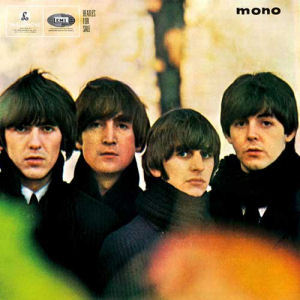 It’s amazing what good a vacation can do! The second half of 1964 was completely hectic for The Beatles. In between extensive touring in Britain, America, Sweden and Scotland, as well as television and radio appearances and interviews and movie premiers, they were obligated to record an entire new album and single for release in time for the Christmas-buying season. With all of this on their plate, they scrambled to write enough material to satisfy Beatles fans worldwide who were expecting to have their ears tantalized. What resulted was a thrown together yet amazing album entitled "Beatles For Sale." It’s amazing what good a vacation can do! The second half of 1964 was completely hectic for The Beatles. In between extensive touring in Britain, America, Sweden and Scotland, as well as television and radio appearances and interviews and movie premiers, they were obligated to record an entire new album and single for release in time for the Christmas-buying season. With all of this on their plate, they scrambled to write enough material to satisfy Beatles fans worldwide who were expecting to have their ears tantalized. What resulted was a thrown together yet amazing album entitled "Beatles For Sale."
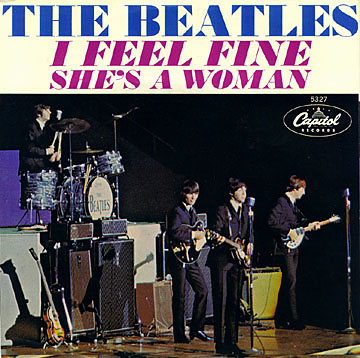 They struggled to come up with something commercial enough for their next single and kept second-guessing themselves until they decided on offering “I Feel Fine” and “She’s A Woman” as their end-of-the-year single, which didn’t fail to satisfy. They struggled to come up with something commercial enough for their next single and kept second-guessing themselves until they decided on offering “I Feel Fine” and “She’s A Woman” as their end-of-the-year single, which didn’t fail to satisfy.
They ended the year in their home-base of London performing a 20-night variety show entitled “Another Beatles Christmas Show.” Shortly after this ended, it was finally rest time! John vacationed in Switzerland, Paul vacationed in Tunisia, and Ringo got married. This well deserved rest resulted in a chance for all to live a normal life and recharge their batteries for the equally hectic 1965 that lay ahead.
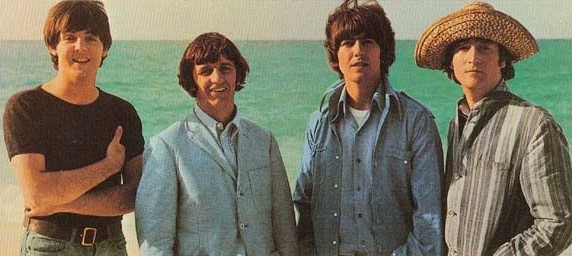 In the process, with clear heads, inspiration ran high. The result was that they didn’t need to second-guess themselves anymore as to what would be the next single. When they entered the recording studio for the first time in 1965, they were very sure of themselves. John and Paul’s new collaborative effort “Ticket To Ride” was their first offering that day, and they worked hard to perfect it before moving on. And by May of that year, they had their eighth British and American #1 single. In the process, with clear heads, inspiration ran high. The result was that they didn’t need to second-guess themselves anymore as to what would be the next single. When they entered the recording studio for the first time in 1965, they were very sure of themselves. John and Paul’s new collaborative effort “Ticket To Ride” was their first offering that day, and they worked hard to perfect it before moving on. And by May of that year, they had their eighth British and American #1 single.
Songwriting History
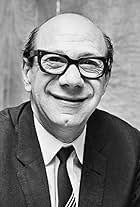 “Ticket To Ride” began to be conceived as an idea for a future song as early as December, 1964 as recalled by The Beatles music publisher Dick James: “It was…during rehearsals for ‘(Another) Beatles Christmas Show’ at the Hammersmith Odeon, that I sat with Paul in the stalls, watching some of the other acts. Then, he sang a few snatches of melody to me, which he and John had in mind for future songs. Soon after, John started on the same tunes that Paul had just been singing. ‘There’s a title I’ve got in mind,’ John said to me, ‘which I can’t get rid of. She’s got a ticket to ride.’ I liked the phrase, for it was a slightly more original idea than usual for expressing goodbye and parting. I encouraged John to work at it and the matter then passed into the back of my mind.” From this account, we can date the initial idea for the song between December 21st and 24th, 1964, since this is when rehearsals for their Christmas show were held. “Ticket To Ride” began to be conceived as an idea for a future song as early as December, 1964 as recalled by The Beatles music publisher Dick James: “It was…during rehearsals for ‘(Another) Beatles Christmas Show’ at the Hammersmith Odeon, that I sat with Paul in the stalls, watching some of the other acts. Then, he sang a few snatches of melody to me, which he and John had in mind for future songs. Soon after, John started on the same tunes that Paul had just been singing. ‘There’s a title I’ve got in mind,’ John said to me, ‘which I can’t get rid of. She’s got a ticket to ride.’ I liked the phrase, for it was a slightly more original idea than usual for expressing goodbye and parting. I encouraged John to work at it and the matter then passed into the back of my mind.” From this account, we can date the initial idea for the song between December 21st and 24th, 1964, since this is when rehearsals for their Christmas show were held.
 John had taken Dick James' advice and began to put together the song. James continues, “Then, one evening…in February (1965), when John joined George Martin for a skiing holiday in Switzerland, John borrowed a guitar from their skiing instructor and strummed through a tune.” George Martin remembers, “I liked it straightaway. John said he would get together with Paul as soon as he got back to London and finish it off.” John got back from his vacation on February 7th, 1965, but Paul had already left for his vacation in Tunisia by that time, so the writing of “Ticket To Ride” had to wait until February 14th, 1965 when Paul got back. John had taken Dick James' advice and began to put together the song. James continues, “Then, one evening…in February (1965), when John joined George Martin for a skiing holiday in Switzerland, John borrowed a guitar from their skiing instructor and strummed through a tune.” George Martin remembers, “I liked it straightaway. John said he would get together with Paul as soon as he got back to London and finish it off.” John got back from his vacation on February 7th, 1965, but Paul had already left for his vacation in Tunisia by that time, so the writing of “Ticket To Ride” had to wait until February 14th, 1965 when Paul got back.
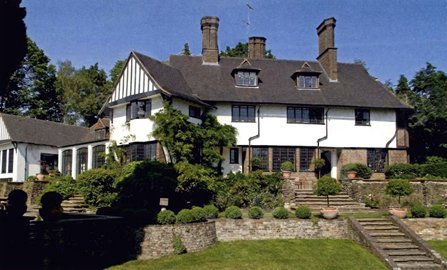 “’Ticket To Ride’ was written by John and myself in the middle of some other stuff for the film at his house (Kenwood) one afternoon,” McCartney remembers. “We wrote the melody together; you can hear on the record, John’s taking the melody and I‘m singing harmony with it. We’d often work those out as we wrote them. Because John sang it, you might have to give him 60 percent of it. It was pretty much a work job that turned out quite well.” “’Ticket To Ride’ was written by John and myself in the middle of some other stuff for the film at his house (Kenwood) one afternoon,” McCartney remembers. “We wrote the melody together; you can hear on the record, John’s taking the melody and I‘m singing harmony with it. We’d often work those out as we wrote them. Because John sang it, you might have to give him 60 percent of it. It was pretty much a work job that turned out quite well.”
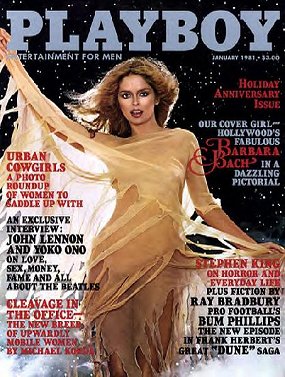 To throw a monkey-wrench into this explanation, John was asked about the song in his Playboy interview of 1980. “That’s me, one of the earliest heavy-metal records,” he explained. “Paul’s contribution was the way Ringo played the drums.” To throw a monkey-wrench into this explanation, John was asked about the song in his Playboy interview of 1980. “That’s me, one of the earliest heavy-metal records,” he explained. “Paul’s contribution was the way Ringo played the drums.”
To clarify this quote, McCartney responds, “John just didn’t take the time to explain that we sat down together and worked on that song for a full three-hour songwriting session, and at the end of it all we had all the words, we had the harmonies, and we had all the little bits.”
At any rate, this three-hour songwriting session had to have occurred at John’s Kenwood home on the afternoon of February 14th, 1965. We know this because the very next day they were in EMI Studios recording the song in its entirety.
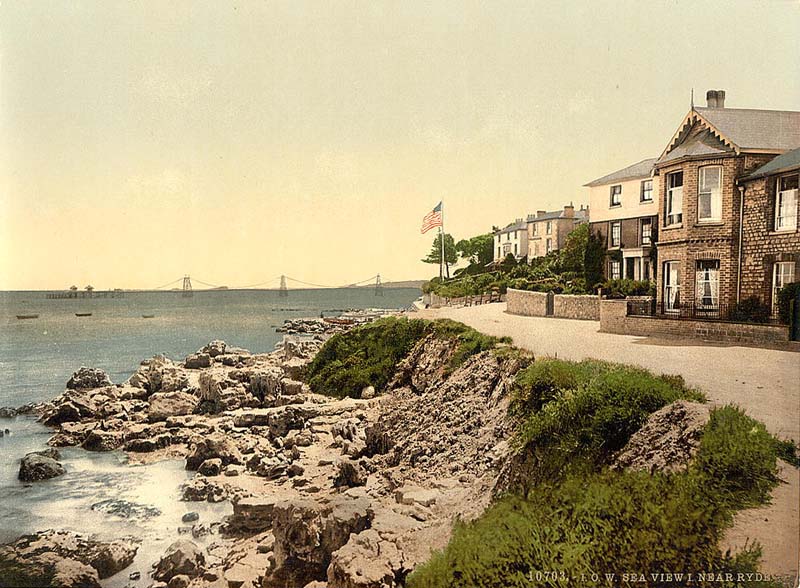 As to the identity of the unique title of the song, there are two explanations that appear plausible. In the Isle of Wight, on the south coast of Britain, there is a town by the name of Ryde. Paul’s cousin Bett and her husband Mike Robbins lived there and were the owners of a pub. Paul and John had hitch-hiked there for a visit back in 1961 (as well as a ferryboat trip in 1963) and it was something that Paul recalled later as inspiration for a title of a song, referring to a British railways ticket to the town of Ryde. “I remember talking about Ryde but it was John’s thing,” Paul remembers about the writing of the song. As to the identity of the unique title of the song, there are two explanations that appear plausible. In the Isle of Wight, on the south coast of Britain, there is a town by the name of Ryde. Paul’s cousin Bett and her husband Mike Robbins lived there and were the owners of a pub. Paul and John had hitch-hiked there for a visit back in 1961 (as well as a ferryboat trip in 1963) and it was something that Paul recalled later as inspiration for a title of a song, referring to a British railways ticket to the town of Ryde. “I remember talking about Ryde but it was John’s thing,” Paul remembers about the writing of the song.
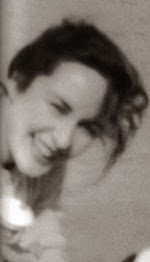 Paul reiterates this story in his 2021 book "The Lyrics": "John and I always liked wordplay. So, the phrase 'She's got a ticket to ride' of course referred to riding on a bus or train, but - if you really want to know - it also referred to Ryde on the Isle Of Wight, where my cousin Betty (Robbins) and her husband Mike were running a pub...It was great fun to visit them, so John and I hitchhiked down to Ryde, and when we wrote the song we were referring to the memory of this trip...When it came to writing rock and roll, we were on the same page. You don't want to write, 'She said that living with me is upsetting.' It's just not rock and roll. It's too front parlour and lace curtains. That's why it has to be 'She said that living with me is bringing her down.'" Paul reiterates this story in his 2021 book "The Lyrics": "John and I always liked wordplay. So, the phrase 'She's got a ticket to ride' of course referred to riding on a bus or train, but - if you really want to know - it also referred to Ryde on the Isle Of Wight, where my cousin Betty (Robbins) and her husband Mike were running a pub...It was great fun to visit them, so John and I hitchhiked down to Ryde, and when we wrote the song we were referring to the memory of this trip...When it came to writing rock and roll, we were on the same page. You don't want to write, 'She said that living with me is upsetting.' It's just not rock and roll. It's too front parlour and lace curtains. That's why it has to be 'She said that living with me is bringing her down.'"
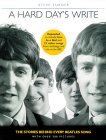 However, Don Short, who was a journalist who travelled quite regularly with The Beatles, remembers John explaining things very differently. As related in Steve Turner’s book “A Hard Day’s Write,” Don relates: “The girls who worked the streets in Hamburg had to have a clean bill of health and so the medical authorities would give them a card saying that they didn’t have a dose of anything. I was with The Beatles when they went back to Hamburg in June 1966 and it was then that John told me that he had coined the phrase ‘a ticket to ride’ to describe these cards. He could have been joking – you always had to be careful with John like that – but I certainly remember him telling me that.” However, Don Short, who was a journalist who travelled quite regularly with The Beatles, remembers John explaining things very differently. As related in Steve Turner’s book “A Hard Day’s Write,” Don relates: “The girls who worked the streets in Hamburg had to have a clean bill of health and so the medical authorities would give them a card saying that they didn’t have a dose of anything. I was with The Beatles when they went back to Hamburg in June 1966 and it was then that John told me that he had coined the phrase ‘a ticket to ride’ to describe these cards. He could have been joking – you always had to be careful with John like that – but I certainly remember him telling me that.”
There are, in fact, many instances where John would joke about the meaning of Beatles songs. For instance, when asked what the inspiration was for their song “Eleanor Rigby,” John’s response was, “two queers!”
Recording History
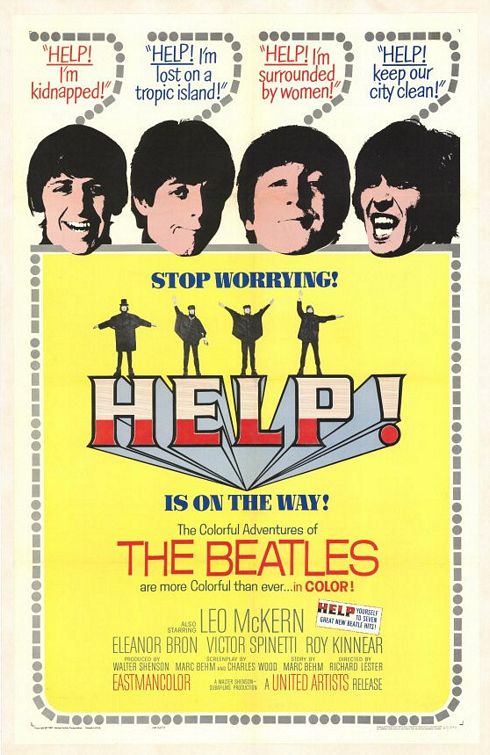 “’Ticket To Ride’ went in with the rest of the songs the boys had lined up for their forthcoming film,” explained George Martin. “It was one of the first we recorded during the week in the studio before they went off to the Bahamas on location.” “’Ticket To Ride’ went in with the rest of the songs the boys had lined up for their forthcoming film,” explained George Martin. “It was one of the first we recorded during the week in the studio before they went off to the Bahamas on location.”
The week of recording took place in 1965 from Monday (February 15th) through Saturday (February 20th) and resulted in eleven songs for consideration for the not-yet-titled movie “Help!” The very first song The Beatles recorded on the very first recording session of the week was “Ticket To Ride,” the writing of which was completed the previous day. With inspiration and enthusiasm at a high, they tackled the song while it was fresh in their minds.
 The afternoon session on this day, the first of two, ran from 2:30 to 5:45 pm and concentrated solely on recording "Ticket To Ride." As usual, the session took place at EMI Studio Two at 3 Abbey Road in London. What wasn’t usual was their recording techniques, which dramatically changed on this day. With the four-track tapes rolling, they rehearsed the song until they were ready to record, at which time the tapes were rewound to start the actual first take. This resulted in a smaller number of “takes” being stipulated but, with the tapes rolling, they could capture a good performance or idea and review it so it could be easily incorporated into the finished recording. The afternoon session on this day, the first of two, ran from 2:30 to 5:45 pm and concentrated solely on recording "Ticket To Ride." As usual, the session took place at EMI Studio Two at 3 Abbey Road in London. What wasn’t usual was their recording techniques, which dramatically changed on this day. With the four-track tapes rolling, they rehearsed the song until they were ready to record, at which time the tapes were rewound to start the actual first take. This resulted in a smaller number of “takes” being stipulated but, with the tapes rolling, they could capture a good performance or idea and review it so it could be easily incorporated into the finished recording.
 Another new technique was to concentrate solely on the rhythm track (either with or without lead vocals) and then overdub other needed ingredients without having a new take number allocated to it. Therefore, since the tape box only shows two takes for “Ticket To Ride,” it required a good number of overdubs and took over three hours to perfect. Another new technique was to concentrate solely on the rhythm track (either with or without lead vocals) and then overdub other needed ingredients without having a new take number allocated to it. Therefore, since the tape box only shows two takes for “Ticket To Ride,” it required a good number of overdubs and took over three hours to perfect.
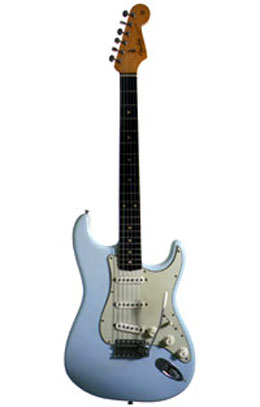 In this case, since the isolated single-tracked vocals of John and Paul are heard with most of the instruments bleeding through their microphones, it appears that both John and Paul sang their vocal parts with the rhythm track. The instrumentation on the rhythm track also includes John on rhythm guitar, Paul on bass, George on lead guitar and Ringo on drums. Handwritten documentation has been unearthed, presumably written by George Martin, which specifies that Paul's bass and Ringo's drums were on track one, John and George's guitars were on track two, and John and Paul's vocals were on track three. In this case, since the isolated single-tracked vocals of John and Paul are heard with most of the instruments bleeding through their microphones, it appears that both John and Paul sang their vocal parts with the rhythm track. The instrumentation on the rhythm track also includes John on rhythm guitar, Paul on bass, George on lead guitar and Ringo on drums. Handwritten documentation has been unearthed, presumably written by George Martin, which specifies that Paul's bass and Ringo's drums were on track one, John and George's guitars were on track two, and John and Paul's vocals were on track three.
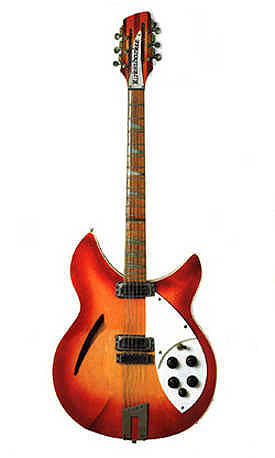 Although many sources credit Paul playing the distinctive opening riff, listening to the master tapes shows it was done on the rhythm track along with the bass guitar, which was impossible for Paul to play at the same time. It is also apparent that the riff was played on a Rickenbacker 360-12 string, which was owned and played quite regularly by George. Describing the instrument in a 1987 BBC interview, George stated: “All it ever seemed was that there was one sound I could get where it was bright, which was the sound I used…the sound you hear on ‘Ticket To Ride.’” George had stated specifically that “Ticket To Ride” was the very last Beatles song that he used this Rickenbacker 12-string guitar on, but the above handwritten documentation specifies that he did use the guitar the next day as well, on his song "I Need You," not to mention on "If I Needed Someone" later that year. Although many sources credit Paul playing the distinctive opening riff, listening to the master tapes shows it was done on the rhythm track along with the bass guitar, which was impossible for Paul to play at the same time. It is also apparent that the riff was played on a Rickenbacker 360-12 string, which was owned and played quite regularly by George. Describing the instrument in a 1987 BBC interview, George stated: “All it ever seemed was that there was one sound I could get where it was bright, which was the sound I used…the sound you hear on ‘Ticket To Ride.’” George had stated specifically that “Ticket To Ride” was the very last Beatles song that he used this Rickenbacker 12-string guitar on, but the above handwritten documentation specifies that he did use the guitar the next day as well, on his song "I Need You," not to mention on "If I Needed Someone" later that year.
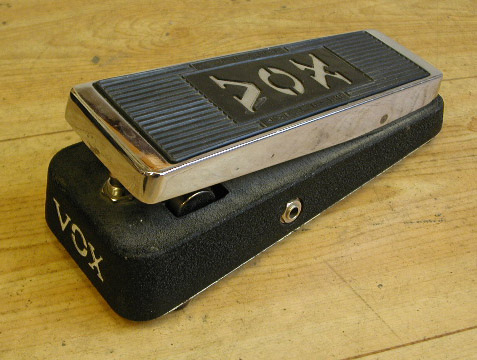 “Take one” was an immediate false start, but “take two” was complete. Overdubs were then added onto track four, which included John double-tracking his lead vocals during the second half of each verse (from “she’s got a ticket…” on), Ringo playing tambourine and hand-clapping (not simultaneously, of course) and Harrison playing single open-string A notes on his newly acquired Fender Stratocaster to add a heavy punch to the verses. George also overdubbed some slight guitar phrases in strategic spots of each verse, these being when the instruments stop and John holds out the word "ri-i-ide." This was undoubtedly added in to fill out the sonic gap left when the instruments stop. A foot-controlled volume pedal was utilized by George during this guitar overdub, this being the first time it was used on a Beatles recording (see "I Need You" and "Yes It Is" which were both recorded the following day). “Take one” was an immediate false start, but “take two” was complete. Overdubs were then added onto track four, which included John double-tracking his lead vocals during the second half of each verse (from “she’s got a ticket…” on), Ringo playing tambourine and hand-clapping (not simultaneously, of course) and Harrison playing single open-string A notes on his newly acquired Fender Stratocaster to add a heavy punch to the verses. George also overdubbed some slight guitar phrases in strategic spots of each verse, these being when the instruments stop and John holds out the word "ri-i-ide." This was undoubtedly added in to fill out the sonic gap left when the instruments stop. A foot-controlled volume pedal was utilized by George during this guitar overdub, this being the first time it was used on a Beatles recording (see "I Need You" and "Yes It Is" which were both recorded the following day).
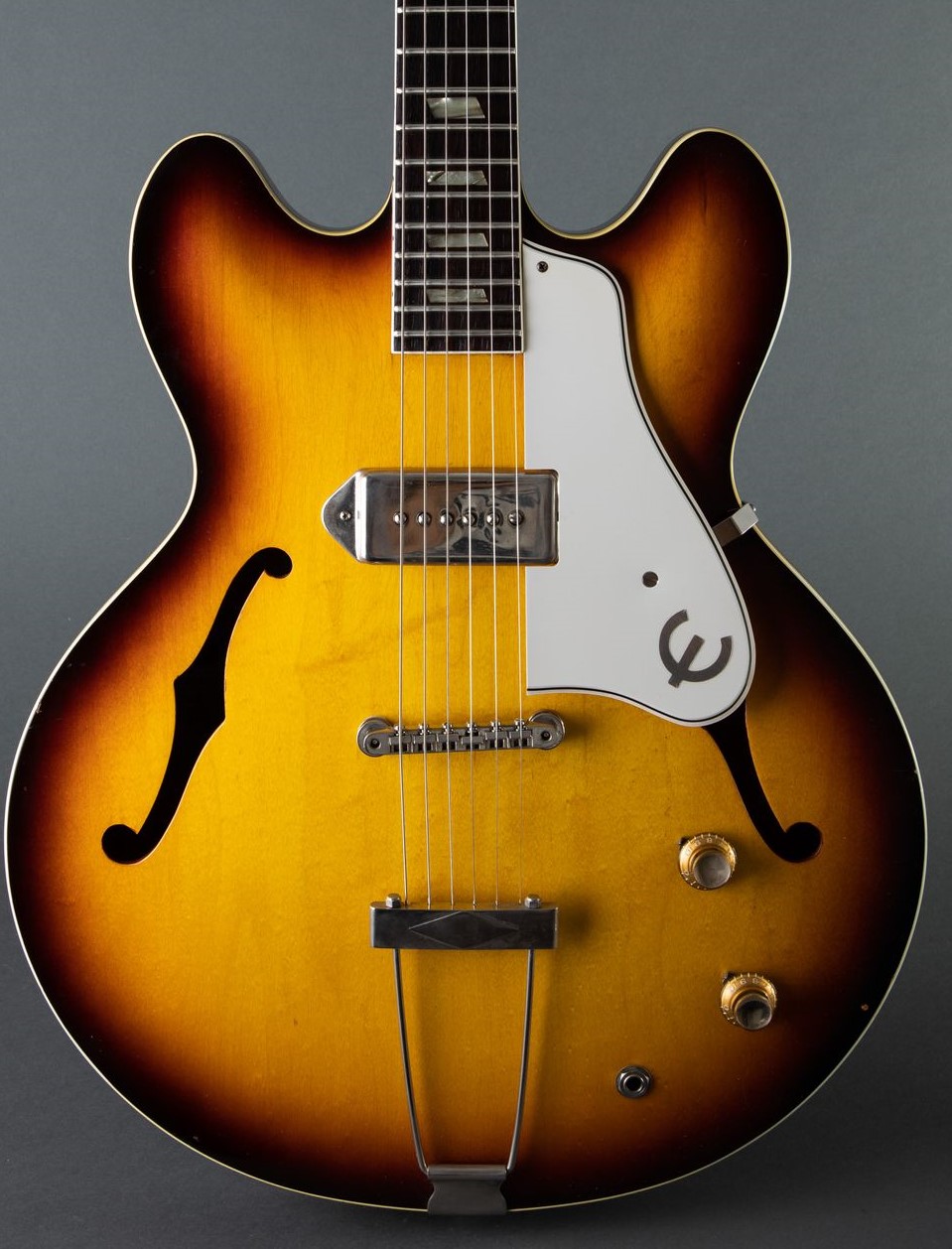 The lead guitar riffs at the ends of the bridges, as well as the conclusion of the song, were also added as an overdub. In an interview in Melody Maker magazine in 1965, Lennon himself tells us who played these guitar riffs. With the song playing in the background, John states: “Hey, listen. Hear that played by Paul? He’s been doing quite a bit of lead guitar work this week. Gear. I guess he’s moving in!” (Paul also performed lead guitar work on “Another Girl” and “The Night Before,” both recorded the same week.) The lead guitar riffs at the ends of the bridges, as well as the conclusion of the song, were also added as an overdub. In an interview in Melody Maker magazine in 1965, Lennon himself tells us who played these guitar riffs. With the song playing in the background, John states: “Hey, listen. Hear that played by Paul? He’s been doing quite a bit of lead guitar work this week. Gear. I guess he’s moving in!” (Paul also performed lead guitar work on “Another Girl” and “The Night Before,” both recorded the same week.)
 The first mono mix of the song was performed on February 18th, 1965 in the control room of EMI Studio Two by George Martin and engineers Norman Smith and Ken Scott. This mix fades at 3:03, which puts the song just over the established three minute mark for pop songs at the time. With a good amount of reverb added, a worldwide number one hit was born. The first mono mix of the song was performed on February 18th, 1965 in the control room of EMI Studio Two by George Martin and engineers Norman Smith and Ken Scott. This mix fades at 3:03, which puts the song just over the established three minute mark for pop songs at the time. With a good amount of reverb added, a worldwide number one hit was born.
 The first stereo mix was made on February 23rd, 1965 in the control room of EMI Studio Two, but George Martin wasn’t present on this day. He left this relatively unimportant mix to engineers Norman Smith and Malcolm Davies to create. Not quite as much reverb was applied and the bass quality of the entire track was boosted to compensate for Paul’s bass guitar being somewhat buried on the master tape. Another difference was the fade out, which extended the song to 3:10 to reveal another McCartney guitar riff or two. This unique version appeared on British stereo copies of the album “Help!” but wasn’t available in the US until seventeen years later. The first stereo mix was made on February 23rd, 1965 in the control room of EMI Studio Two, but George Martin wasn’t present on this day. He left this relatively unimportant mix to engineers Norman Smith and Malcolm Davies to create. Not quite as much reverb was applied and the bass quality of the entire track was boosted to compensate for Paul’s bass guitar being somewhat buried on the master tape. Another difference was the fade out, which extended the song to 3:10 to reveal another McCartney guitar riff or two. This unique version appeared on British stereo copies of the album “Help!” but wasn’t available in the US until seventeen years later.
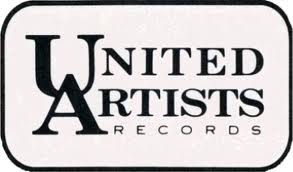 On March 15th, 1965, another mono mix was created in the control room of EMI Studio Two by Norman Smith and an unknown 2nd engineer. This mix was dispatched to United Artists and was used in the first prints of the “Help!” movie. On March 15th, 1965, another mono mix was created in the control room of EMI Studio Two by Norman Smith and an unknown 2nd engineer. This mix was dispatched to United Artists and was used in the first prints of the “Help!” movie.
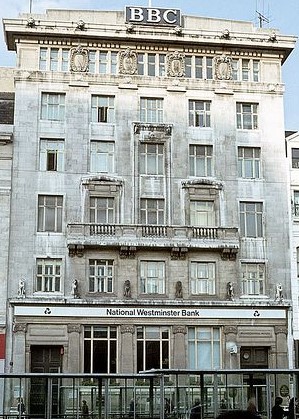 The Beatles final BBC radio show, entitled “The Beatles (Invite You To Take A Ticket To Ride),” was recorded in Studio One of BBC Piccadilly Studios in London on May 26th, 1965 between 2:30 and 6 pm with Keith Bateson as producer, this program airing on June 7th of that year between 10 am and 12:15 pm. “Ticket To Ride” was heard twice in the broadcast, 37 seconds of the song at the beginning of the show and the full song at the end. The Beatles final BBC radio show, entitled “The Beatles (Invite You To Take A Ticket To Ride),” was recorded in Studio One of BBC Piccadilly Studios in London on May 26th, 1965 between 2:30 and 6 pm with Keith Bateson as producer, this program airing on June 7th of that year between 10 am and 12:15 pm. “Ticket To Ride” was heard twice in the broadcast, 37 seconds of the song at the beginning of the show and the full song at the end.
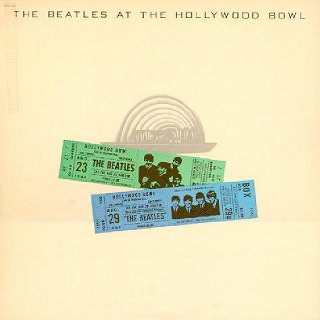 Two other recording sessions were made of the song as live performances at the Hollywood Bowl in Los Angeles, California during their second American tour. Both shows, August 29th and 30th, 1965, were recorded for the intended purpose of being included in a live album by the end of the year. While this didn’t happen, many songs from these performances did eventually get released in 1977 on the album “The Beatles At The Hollywood Bowl.” The August 29th performance of the song, which was produced by Karl Engemann and engineered by Hugh Davies, made the album while the August 30th version, produced by Voyle Gilmore and engineered by Pete Abbott, is still in the vaults. George Martin and engineer Geoff Emerick received the three-track master tapes from these shows on January 18th, 1977 for the purpose of cleaning up the recordings for release, the August 29th performance being deemed best by January 23rd, 1977 when they completed their processing work. Two other recording sessions were made of the song as live performances at the Hollywood Bowl in Los Angeles, California during their second American tour. Both shows, August 29th and 30th, 1965, were recorded for the intended purpose of being included in a live album by the end of the year. While this didn’t happen, many songs from these performances did eventually get released in 1977 on the album “The Beatles At The Hollywood Bowl.” The August 29th performance of the song, which was produced by Karl Engemann and engineered by Hugh Davies, made the album while the August 30th version, produced by Voyle Gilmore and engineered by Pete Abbott, is still in the vaults. George Martin and engineer Geoff Emerick received the three-track master tapes from these shows on January 18th, 1977 for the purpose of cleaning up the recordings for release, the August 29th performance being deemed best by January 23rd, 1977 when they completed their processing work.
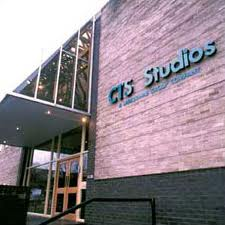 There is some uncertainty as to whether a further Beatles recording session took place concerning the song “Ticket To Ride.” Their August 15th, 1965 performance of the song at Shea Stadium in New York City was filmed and being prepared for a television special centered around this monumental show. On January 5th, 1966, The Beatles were brought into CTS Studios in London to touch up the somewhat flawed performances of the songs they performed had that day. With many songs receiving overdubs and two songs receiving completely new versions at CTS Studios, there is speculation as to whether “Ticket To Ride” was also improved upon. John Lennon wanted a whole new version recorded on that day, but a decision was made to just use the existing performance. Mark Lewisohn, in his detailed book “The Complete Beatles Chronicle,” suggests that maybe some overdubbing was recorded to add some texture. There is some uncertainty as to whether a further Beatles recording session took place concerning the song “Ticket To Ride.” Their August 15th, 1965 performance of the song at Shea Stadium in New York City was filmed and being prepared for a television special centered around this monumental show. On January 5th, 1966, The Beatles were brought into CTS Studios in London to touch up the somewhat flawed performances of the songs they performed had that day. With many songs receiving overdubs and two songs receiving completely new versions at CTS Studios, there is speculation as to whether “Ticket To Ride” was also improved upon. John Lennon wanted a whole new version recorded on that day, but a decision was made to just use the existing performance. Mark Lewisohn, in his detailed book “The Complete Beatles Chronicle,” suggests that maybe some overdubbing was recorded to add some texture.
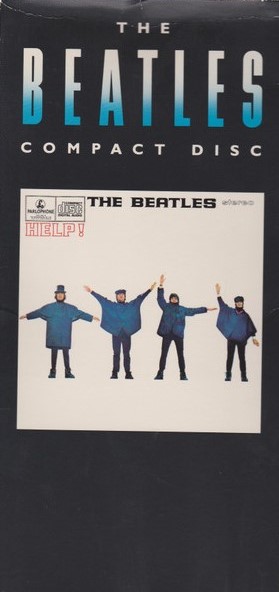 In 1986, with the imminent worldwide release of the complete British “Help!” album on compact disc, George Martin felt it necessary to revisit the master tapes to create a new stereo mix of “Ticket To Ride,” as well as the rest of the album. This was due to the improved technology of the time as well as him not being involved in the original stereo mix made in 1965. The resulting new mix shows sharper vocals from John, lessening overall bass frequencies, and more prominence of Paul’s bass guitar. He smartly kept the longer fade-out ending as well. In 1986, with the imminent worldwide release of the complete British “Help!” album on compact disc, George Martin felt it necessary to revisit the master tapes to create a new stereo mix of “Ticket To Ride,” as well as the rest of the album. This was due to the improved technology of the time as well as him not being involved in the original stereo mix made in 1965. The resulting new mix shows sharper vocals from John, lessening overall bass frequencies, and more prominence of Paul’s bass guitar. He smartly kept the longer fade-out ending as well.
 An even more vibrant stereo mix was made in Abbey Road Studios by George Martin's son Giles Martin, along with Sam Okell, in 2015 for the re-release of the compilation album "Beatles 1." Then again in 2023, Giles Martin was given the task of creating a "demix remix" of "I Feel Fine" for inclusion on the 50th Anniversary edition of the compilation album "The Beatles / 1962 - 1966" (aka "The Red Album"). With Peter Jackson's AI technology at his disposal, Giles Martin was able to utilize this "new machine-learning techology" so that "individual elements that were put to tape...and were therefore impossible to separate" could be "untangled, allowing Giles Martin to put the original recordings back together with even greater clarity and impact," as stated by John Harris in the liner notes of the above mentioned album. With the vibrancy of the guitars and the slight stereo spread of Ringo's drums that were then made possible with AI, the snare drum panned to the middle and the toms to the left channel, make this arguably the best stereo mix of "Ticket To Ride" yet. An even more vibrant stereo mix was made in Abbey Road Studios by George Martin's son Giles Martin, along with Sam Okell, in 2015 for the re-release of the compilation album "Beatles 1." Then again in 2023, Giles Martin was given the task of creating a "demix remix" of "I Feel Fine" for inclusion on the 50th Anniversary edition of the compilation album "The Beatles / 1962 - 1966" (aka "The Red Album"). With Peter Jackson's AI technology at his disposal, Giles Martin was able to utilize this "new machine-learning techology" so that "individual elements that were put to tape...and were therefore impossible to separate" could be "untangled, allowing Giles Martin to put the original recordings back together with even greater clarity and impact," as stated by John Harris in the liner notes of the above mentioned album. With the vibrancy of the guitars and the slight stereo spread of Ringo's drums that were then made possible with AI, the snare drum panned to the middle and the toms to the left channel, make this arguably the best stereo mix of "Ticket To Ride" yet.
Song Structure and Style
“’Ticket To Ride’ was probably one of our hardest singles for others to get used to, because of the strange lines,” stated George Harrison shortly after its release. "Can't say I liked 'Ticket' much," Paul stated in the British magazine Record Mirror's May 15th, 1965 issue while anticipating their next single "Help!" that was due to be released on June 23rd of that year.
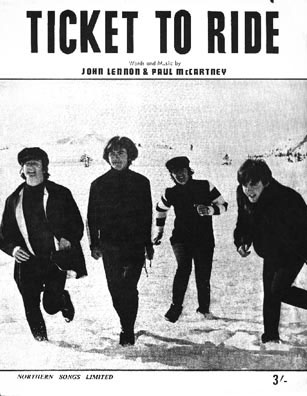 “It’s not that unusual though, I mean it’s still us,” said John Lennon around the same time. “It’s no more unusual than we are. Does that make it unusual? We are quite pleased with the record.” “It’s not that unusual though, I mean it’s still us,” said John Lennon around the same time. “It’s no more unusual than we are. Does that make it unusual? We are quite pleased with the record.”
The structure of the song was actually very usual for The Beatles, comprising the standard ‘verse/ verse/ bridge/ verse’ format with an added bridge and verse at the end (making it an aababa structure). What was quite unusual, though, was the arrangement which, from all vantage points, was unlike anything The Beatles had ever done before.
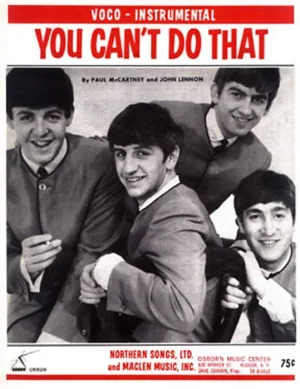 The song starts off with a four measure introduction that repeats a distinctive single-measure guitar riff four times played on George’s Rickenbacker 12-string guitar. After the riff is heard by itself twice, a vibrant drum roll from Ringo ushers in the rest of the group for the final two measures of the intro. Having the full band arrangement come in after two measures of a guitar riff had been done previously by the group, such as on “You Can’t Do That.” The song starts off with a four measure introduction that repeats a distinctive single-measure guitar riff four times played on George’s Rickenbacker 12-string guitar. After the riff is heard by itself twice, a vibrant drum roll from Ringo ushers in the rest of the group for the final two measures of the intro. Having the full band arrangement come in after two measures of a guitar riff had been done previously by the group, such as on “You Can’t Do That.”
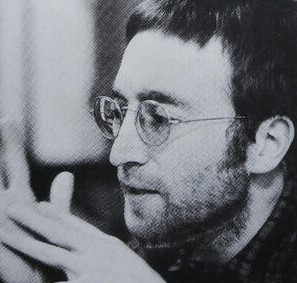 What hadn’t been done previously was the fullness of sound that comes in on this third measure, as John himself explained in 1970: “’Ticket To Ride’ was slightly a new sound at the time. It was pretty f**king heavy for then, if you go and look in the charts for what other music people were making. You hear it now and it doesn’t sound too bad…It’s a heavy record and the drums are heavy too. That’s why I like it.” What hadn’t been done previously was the fullness of sound that comes in on this third measure, as John himself explained in 1970: “’Ticket To Ride’ was slightly a new sound at the time. It was pretty f**king heavy for then, if you go and look in the charts for what other music people were making. You hear it now and it doesn’t sound too bad…It’s a heavy record and the drums are heavy too. That’s why I like it.”
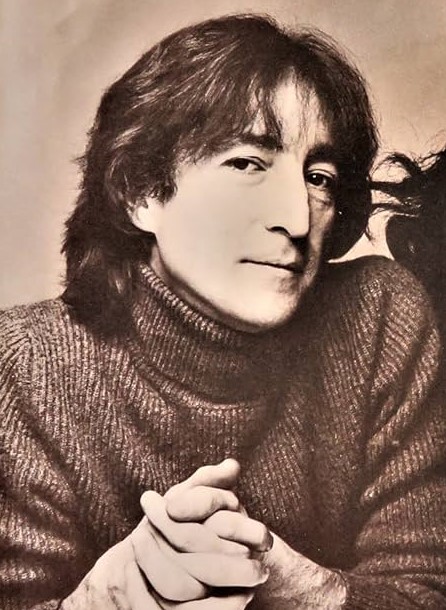 This heavy sound, which motivated John to describe the song in 1980 as “one of the earliest heavy-metal records,” was made by a twelve-string electric guitar, two six-string electric guitars (one thumping the bass notes quite high in the mix), a bass guitar and a unique drum pattern that accents the bass drum, snare and toms without touching the cymbals. This heavy sound, which motivated John to describe the song in 1980 as “one of the earliest heavy-metal records,” was made by a twelve-string electric guitar, two six-string electric guitars (one thumping the bass notes quite high in the mix), a bass guitar and a unique drum pattern that accents the bass drum, snare and toms without touching the cymbals.
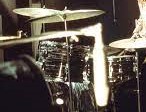 This drum pattern, which John clarifies as “Paul’s contribution,” mimics the exact rhythm of the guitar riff with its ending triplet-like syncopation. “It is pretty slow and we are all very pleased with it,” McCartney explained in 1965, adding “I suppose it has a bit of an Arabian rhythm going on.” While the syncopated beat is played on the drums, the tambourine overdub accents the two and four beat of the song to keep the usual 4/4 beat going in our heads. This drum pattern, which John clarifies as “Paul’s contribution,” mimics the exact rhythm of the guitar riff with its ending triplet-like syncopation. “It is pretty slow and we are all very pleased with it,” McCartney explained in 1965, adding “I suppose it has a bit of an Arabian rhythm going on.” While the syncopated beat is played on the drums, the tambourine overdub accents the two and four beat of the song to keep the usual 4/4 beat going in our heads.
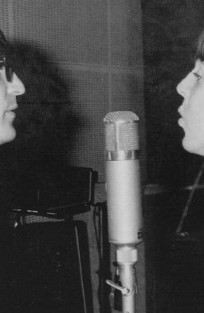 The first verse, like all of the verses, is sixteen measures long and seems to feature the guitar riff running all the way through, although it does cut out in the ninth measure and reappear in the fifteenth measure to round out the verse. John sings lead vocals single-tracked through the first eight measures, which personalizes the sadness of the lyrics, but then switches to double-tracked vocals for the second half of the verse to highlight the title of the song. Paul’s vocals appear only when harmonies are needed, which occur on the words “today, yeah,” “the girl that’s driving me mad” and “she don’t care.” The first verse, like all of the verses, is sixteen measures long and seems to feature the guitar riff running all the way through, although it does cut out in the ninth measure and reappear in the fifteenth measure to round out the verse. John sings lead vocals single-tracked through the first eight measures, which personalizes the sadness of the lyrics, but then switches to double-tracked vocals for the second half of the verse to highlight the title of the song. Paul’s vocals appear only when harmonies are needed, which occur on the words “today, yeah,” “the girl that’s driving me mad” and “she don’t care.”
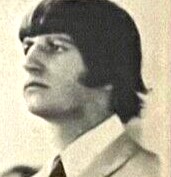 A predictable but effective feature of the song is the trademark “Beatles break” that occurs in the twelfth measure to highlight the three-syllable descending “ri-i-ide” from Lennon. Ringo brings the group back in with a thunderous drum roll on his toms just in time for the vocal crescendo and climax of the verse, with the guitar riff and thumping guitar notes reemerging as a perfect segue into a structurally identical second verse. A predictable but effective feature of the song is the trademark “Beatles break” that occurs in the twelfth measure to highlight the three-syllable descending “ri-i-ide” from Lennon. Ringo brings the group back in with a thunderous drum roll on his toms just in time for the vocal crescendo and climax of the verse, with the guitar riff and thumping guitar notes reemerging as a perfect segue into a structurally identical second verse.
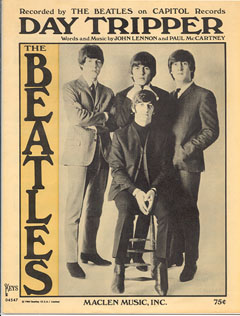 The eight-measure bridge then follows, which contrasts nicely from the verses in many ways. First of all, Ringo rides on his hi-hat for the first time in the song with a usual steady 4/4 beat while his overdubbed tambourine plays a steady full rock beat as well (which actually comes in a measure early on this bridge). Paul harmonizes throughout the entire bridge and ends this section with a fragrant guitar fill to usher in the next verse. While this is happening in the seventh and eighth measures, the band takes another “break” but the guitar rhythm builds in anticipation for the upcoming verse as does the shaking tambourine (similarly played to equal effect in “Day Tripper” later in the year). The eight-measure bridge then follows, which contrasts nicely from the verses in many ways. First of all, Ringo rides on his hi-hat for the first time in the song with a usual steady 4/4 beat while his overdubbed tambourine plays a steady full rock beat as well (which actually comes in a measure early on this bridge). Paul harmonizes throughout the entire bridge and ends this section with a fragrant guitar fill to usher in the next verse. While this is happening in the seventh and eighth measures, the band takes another “break” but the guitar rhythm builds in anticipation for the upcoming verse as does the shaking tambourine (similarly played to equal effect in “Day Tripper” later in the year).
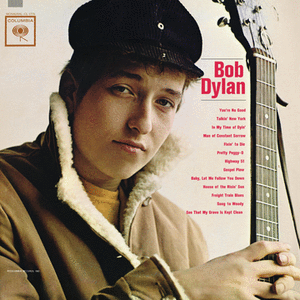 The first verse is then repeated but with some distinctive differences. Ringo plays the same “Arabian rhythm” but no longer with the triplet-like syncopation (whether this is intentional or not is debatable), and John adds a couple nuances to his solo vocal work in the first eight measures. First, he adds the word “yeah” at the end of the seventh measure (after he sings “away”). Then he injects a double-tracked Bob Dylan-like “ahhh” that descends dramatically into the key lyric “she’s got a ticket to ride.” At the end of the “break” in the twelfth measure, Ringo this time plays a rapid-fire snare/floor tom fill to bring the group back in to finish the verse. The first verse is then repeated but with some distinctive differences. Ringo plays the same “Arabian rhythm” but no longer with the triplet-like syncopation (whether this is intentional or not is debatable), and John adds a couple nuances to his solo vocal work in the first eight measures. First, he adds the word “yeah” at the end of the seventh measure (after he sings “away”). Then he injects a double-tracked Bob Dylan-like “ahhh” that descends dramatically into the key lyric “she’s got a ticket to ride.” At the end of the “break” in the twelfth measure, Ringo this time plays a rapid-fire snare/floor tom fill to bring the group back in to finish the verse.
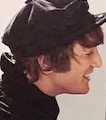 After an identical repeat of the bridge (with the steady tambourine beat coming in exactly when it should this time) the second verse is then repeated with only minimal differences. The first word is sung as “shed” instead of “she said,” and Ringo’s drum fill after the “break” is now reduced to a single snare beat. John's descending "ahhh" in the eighth measure is not double-tracked this time, as if its appearance was an afterthought. The sixteenth measure, however, consists of an additional “break” as a transition to the conclusion of the song which, when faded, extends the song by ten measures (eight in mono). After an identical repeat of the bridge (with the steady tambourine beat coming in exactly when it should this time) the second verse is then repeated with only minimal differences. The first word is sung as “shed” instead of “she said,” and Ringo’s drum fill after the “break” is now reduced to a single snare beat. John's descending "ahhh" in the eighth measure is not double-tracked this time, as if its appearance was an afterthought. The sixteenth measure, however, consists of an additional “break” as a transition to the conclusion of the song which, when faded, extends the song by ten measures (eight in mono).
 Paul describes this conclusion in his book “Many Years From Now”: “I think the interesting thing was a crazy ending; instead of ending like the previous verse, we changed the tempo. We picked up one of the lines, ‘My baby don’t care,’ but completely altered the melody. We almost invented the idea of a new bit of a song on the fade-out with this song; it was something specially written for the fade-out, which was very effective but it was quite cheeky and we did a fast ending. It was quite radical at the time.” Paul describes this conclusion in his book “Many Years From Now”: “I think the interesting thing was a crazy ending; instead of ending like the previous verse, we changed the tempo. We picked up one of the lines, ‘My baby don’t care,’ but completely altered the melody. We almost invented the idea of a new bit of a song on the fade-out with this song; it was something specially written for the fade-out, which was very effective but it was quite cheeky and we did a fast ending. It was quite radical at the time.”
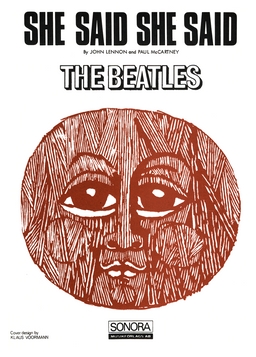 Notable ingredients of this conclusion include John’s delving into falsetto for the first time in the song as well as Paul’s colorful guitar licks that propel the song into the fade. Although Paul is always the perfectionist, he does flub the first bass note of this conclusion by playing one fret too high, but then quickly corrects the mistake for the duration of the song. One set of clapping hands, most likely those of Ringo, are also heard in the fade. This switch to a double-time tempo was used again later, such as in next year’s “She Said She Said.” Notable ingredients of this conclusion include John’s delving into falsetto for the first time in the song as well as Paul’s colorful guitar licks that propel the song into the fade. Although Paul is always the perfectionist, he does flub the first bass note of this conclusion by playing one fret too high, but then quickly corrects the mistake for the duration of the song. One set of clapping hands, most likely those of Ringo, are also heard in the fade. This switch to a double-time tempo was used again later, such as in next year’s “She Said She Said.”
John’s deadpan vocal work is matchless in convincingly conveying the mood of the lyrics. His rhythm guitar may be very low in the mix, but his emotive vocal performance moves the listener to believe he really has been dumped and is wallowing in self pity.
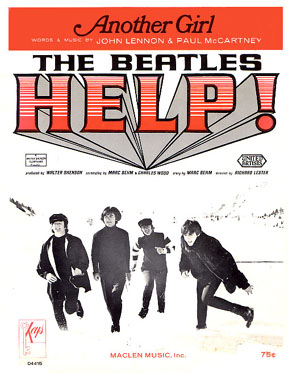 Paul, being thoroughly vested in this song, insists on maintaining a high profile throughout. His bass work is suitably busy and his lead guitar flourishes work nicely as icing on the cake. (His guitar performance on this day was what most likely gave him enough confidence to play an even larger role on “Another Girl” the following day.) His vocal harmonies, whether directed by George Martin or not, were superbly crafted and executed. Paul, being thoroughly vested in this song, insists on maintaining a high profile throughout. His bass work is suitably busy and his lead guitar flourishes work nicely as icing on the cake. (His guitar performance on this day was what most likely gave him enough confidence to play an even larger role on “Another Girl” the following day.) His vocal harmonies, whether directed by George Martin or not, were superbly crafted and executed.
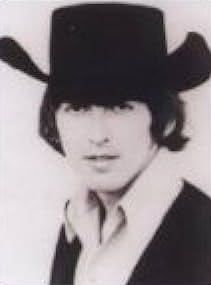 George Harrison is viewed as being demoted to rhythm guitarist in “Ticket To Ride,” although the truth of the matter is that his input, from the winding 12-string guitar riff to the thumping overdubbed lower notes that drive the song, gives it the push that makes it sound so heavy and insistent. George Harrison is viewed as being demoted to rhythm guitarist in “Ticket To Ride,” although the truth of the matter is that his input, from the winding 12-string guitar riff to the thumping overdubbed lower notes that drive the song, gives it the push that makes it sound so heavy and insistent.
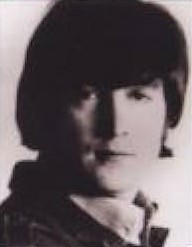 Ringo didn’t have an easy ride here either. With his heavy-handed “Arabian” beat, his innovative drum fills, and his tambourine and hand-clapping, he was also quite involved in making this song the force that it became. Ringo didn’t have an easy ride here either. With his heavy-handed “Arabian” beat, his innovative drum fills, and his tambourine and hand-clapping, he was also quite involved in making this song the force that it became.
Being sad had been a feature of Lennon-penned songs throughout the last couple of years, but the melody line and delivery that brought the beginning words “I think I’m gonna be sad” really makes you feel the reality of his pain. The lyrics were very straightforward and simple, which is how you would convey this story if you were the one who was feeling the hopelessness the singer did.
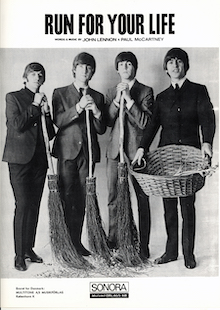 As if with an open-mouthed dumbfounded expression, John is depicting this newly informed loss to a close friend. “The girl that’s driving me mad is going away,” he exclaims with shoulders raised and arms outstretched. He’s not mad or trying to convince her to stay, not even lashing back with sarcasm or seeking revenge (as with "Run For Your Life" written later that year). He knows it’s too late. He simply can’t believe this is happening and knows he lost and there’s nothing he can do about it. The kicker is that “she don’t care,” which is, because of the repeated use of the phrase, the ultimate shock. As if with an open-mouthed dumbfounded expression, John is depicting this newly informed loss to a close friend. “The girl that’s driving me mad is going away,” he exclaims with shoulders raised and arms outstretched. He’s not mad or trying to convince her to stay, not even lashing back with sarcasm or seeking revenge (as with "Run For Your Life" written later that year). He knows it’s too late. He simply can’t believe this is happening and knows he lost and there’s nothing he can do about it. The kicker is that “she don’t care,” which is, because of the repeated use of the phrase, the ultimate shock.
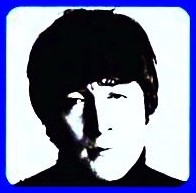 He knows what she should do; “she ought to think twice, she ought to do right by me.” But there’s no use in wishing because she “don’t care” about him anyway. The reason for her leaving is explained in the second verse, namely that she wants her freedom. But “she would never be free” when he was around. As if to drown his sorrow, he ends by repeating the shocking reality “my baby don’t care!” He knows what she should do; “she ought to think twice, she ought to do right by me.” But there’s no use in wishing because she “don’t care” about him anyway. The reason for her leaving is explained in the second verse, namely that she wants her freedom. But “she would never be free” when he was around. As if to drown his sorrow, he ends by repeating the shocking reality “my baby don’t care!”
American Releases
On April 19th, 1965, Capitol Records in America released “Ticket To Ride” as a single, which was only ten days after Britain got to own it. Jumping the gun, the label read that both this song and its b-side “Yes It Is” would be featured in their upcoming United Artists movie entitled “Eight Arms To Hold You.” Not only did the b-side not appear in the film, the movie’s title wasn’t even correct. Nonetheless, the label was never changed, even when the single was converted to the Apple label in the '70s.
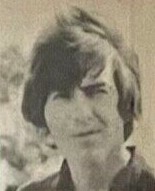 "We are always worried with each record," George Harrison stated in 1965 just as the single was being released. "With 'Ticket To Ride' we were even more worried. There's bound to be a time when we come in at #19 (on the charts). But this #1 business doesn't seem to stop - great while it lasts." "We are always worried with each record," George Harrison stated in 1965 just as the single was being released. "With 'Ticket To Ride' we were even more worried. There's bound to be a time when we come in at #19 (on the charts). But this #1 business doesn't seem to stop - great while it lasts."
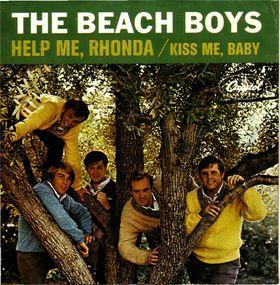 While “Ticket To Ride” did finally spend a week in the #1 position on the Billboard Hot 100 that year, it surprisingly didn’t sell a million copies. American record buyers were apparently more taken with The Beach Boys’ “Help Me Rhonda” at the time, which quickly replaced it in the top spot. While “Ticket To Ride” did finally spend a week in the #1 position on the Billboard Hot 100 that year, it surprisingly didn’t sell a million copies. American record buyers were apparently more taken with The Beach Boys’ “Help Me Rhonda” at the time, which quickly replaced it in the top spot.
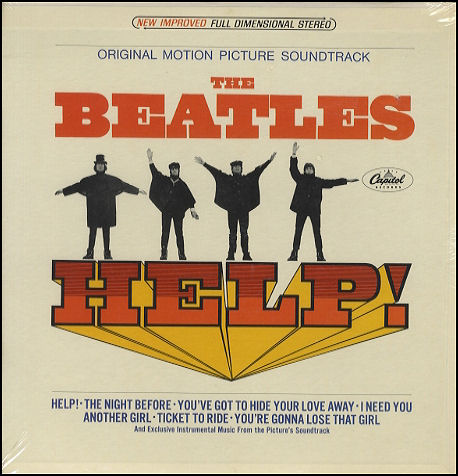 Nearly four months later, on August 13th, 1965, it appeared on a Capitol Records US album, this being the soundtrack to their newly released film “Help!” While the rest of The Beatles songs that appear on this release were the stereo versions shipped over from EMI, for some reason they used the mono mix of the song that appeared on the single for this album. For the stereo version of the album, they created a “duophonic” fake stereo mix by putting the bass frequencies on one channel and the treble frequencies on the other. This soundtrack album was released on an individual compact disc on January 21st, 2014, both the mono and the stereo mixes being contained on a single CD. Nearly four months later, on August 13th, 1965, it appeared on a Capitol Records US album, this being the soundtrack to their newly released film “Help!” While the rest of The Beatles songs that appear on this release were the stereo versions shipped over from EMI, for some reason they used the mono mix of the song that appeared on the single for this album. For the stereo version of the album, they created a “duophonic” fake stereo mix by putting the bass frequencies on one channel and the treble frequencies on the other. This soundtrack album was released on an individual compact disc on January 21st, 2014, both the mono and the stereo mixes being contained on a single CD.
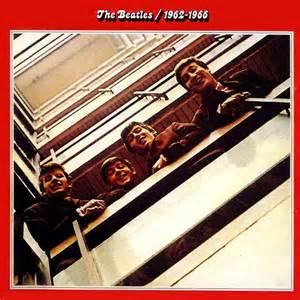 The first official American “greatest hits” package was released on April 2nd, 1973 in the form of “The Beatles/1962-1966” (aka “The Red Album”). Eight years after its initial release, Capitol still didn’t think to incorporate the stereo mix that had been available from the beginning. Not knowing any better, the duophonic stereo versions of many of the songs contained on this double-album were received with open arms by US audiences, quickly reaching the #3 on the Billboard album chart. When this set was released on compact disc in September of 1993, however, it contained the new 1986 stereo mix of the song, which also was contained on the composite "Red Album / Blue Album" promotional sampler that was released at the same time. The "Red Album" was then re-released as a remastered set on August 10th, 2010. The first official American “greatest hits” package was released on April 2nd, 1973 in the form of “The Beatles/1962-1966” (aka “The Red Album”). Eight years after its initial release, Capitol still didn’t think to incorporate the stereo mix that had been available from the beginning. Not knowing any better, the duophonic stereo versions of many of the songs contained on this double-album were received with open arms by US audiences, quickly reaching the #3 on the Billboard album chart. When this set was released on compact disc in September of 1993, however, it contained the new 1986 stereo mix of the song, which also was contained on the composite "Red Album / Blue Album" promotional sampler that was released at the same time. The "Red Album" was then re-released as a remastered set on August 10th, 2010.
 May 4th, 1977 was the date “The Beatles At The Hollywood Bowl” was finally released, which contained the August 29th, 1965 performance of the song. Paul announces the song as “the record before,” since the single “Help!” was the current release at the time. Interestingly enough, The Beatles omitted the repeat of the second bridge and final verse and ended the song after the third verse, chopping off nearly a minute of the song in the process. This album was eventually remastered by Giles Martin and re-released on September 9th, 2016 with the new title "Live At The Hollywood Bowl." May 4th, 1977 was the date “The Beatles At The Hollywood Bowl” was finally released, which contained the August 29th, 1965 performance of the song. Paul announces the song as “the record before,” since the single “Help!” was the current release at the time. Interestingly enough, The Beatles omitted the repeat of the second bridge and final verse and ended the song after the third verse, chopping off nearly a minute of the song in the process. This album was eventually remastered by Giles Martin and re-released on September 9th, 2016 with the new title "Live At The Hollywood Bowl."
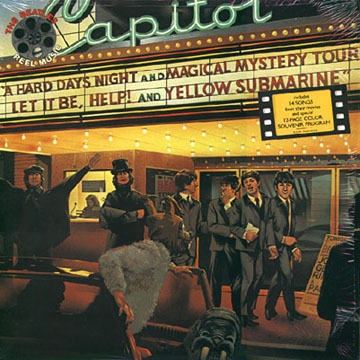 In 1982, Capitol finally brought the true stereo version of the song to the American public on two album releases. The first was on March 22nd, 1982 on the album “Reel Music,” which featured tracks from all five Beatles films. The album was quite successful, peaking at #19 on the Billboard album chart and certified gold by selling just over 500,000 units. Over 12,000 promotional copies were also produced, these being printed on translucent gold vinyl. An accompanying single released the same day entitled “The Beatles Movie Medley” was an artificial montage of seven songs from the album, “Ticket To Ride” being the sixth. This single was also included in the vinyl box set "The Beatles Singles Collection" that was released in the US on December 6th, 1982. The second album of the year to feature the stereo mix of the song was “20 Greatest Hits,” which was released on October 11th, 1982. This album contained all the #1 songs The Beatles had in the US, even a shortened "Hey Jude." In 1982, Capitol finally brought the true stereo version of the song to the American public on two album releases. The first was on March 22nd, 1982 on the album “Reel Music,” which featured tracks from all five Beatles films. The album was quite successful, peaking at #19 on the Billboard album chart and certified gold by selling just over 500,000 units. Over 12,000 promotional copies were also produced, these being printed on translucent gold vinyl. An accompanying single released the same day entitled “The Beatles Movie Medley” was an artificial montage of seven songs from the album, “Ticket To Ride” being the sixth. This single was also included in the vinyl box set "The Beatles Singles Collection" that was released in the US on December 6th, 1982. The second album of the year to feature the stereo mix of the song was “20 Greatest Hits,” which was released on October 11th, 1982. This album contained all the #1 songs The Beatles had in the US, even a shortened "Hey Jude."
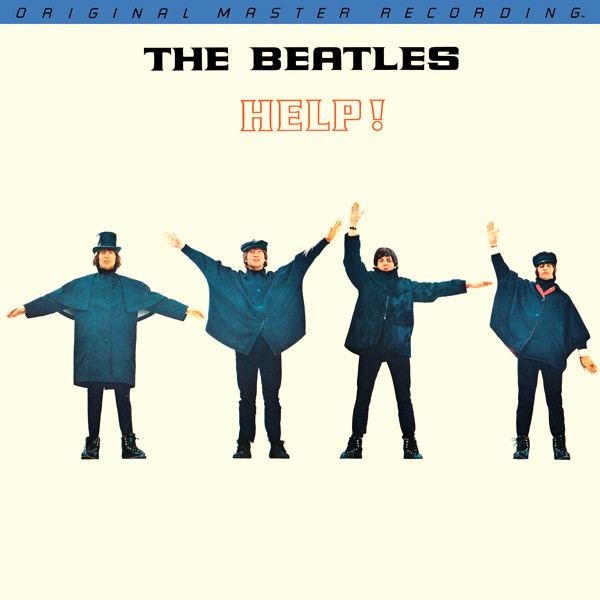 The first time the original British "Help!" album was made available in the US was the "Original Master Recording" vinyl edition released through Mobile Fidelity Sound Lab in January of 1986. This album included "Ticket To Ride" and was prepared utilizing half-speed mastering technology from the original master tape on loan from EMI. This version of the album was only available for a short time and is quite collectible today. The first time the original British "Help!" album was made available in the US was the "Original Master Recording" vinyl edition released through Mobile Fidelity Sound Lab in January of 1986. This album included "Ticket To Ride" and was prepared utilizing half-speed mastering technology from the original master tape on loan from EMI. This version of the album was only available for a short time and is quite collectible today.
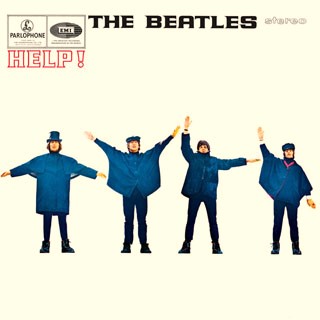 The compact disc era brought the complete British “Help!” album to worldwide release on April 30th, 1987, the vinyl edition coming out on July 21st, 1987. The new George Martin-created stereo mix was included, which boosted Paul’s bass and made John’s vocals sharper. This stereo release was then remastered and re-released on September 9th, 2009 on CD and on November 13th, 2012 on vinyl. The compact disc era brought the complete British “Help!” album to worldwide release on April 30th, 1987, the vinyl edition coming out on July 21st, 1987. The new George Martin-created stereo mix was included, which boosted Paul’s bass and made John’s vocals sharper. This stereo release was then remastered and re-released on September 9th, 2009 on CD and on November 13th, 2012 on vinyl.
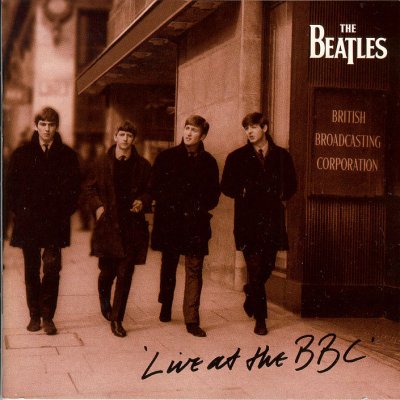 Their very last BBC radio performance on May 26th, 1965 included “Ticket To Ride,” this version appearing on “Live At The BBC,” which was released on November 30th, 1994. Being that the single had just been released at the time of this performance, The Beatles graciously chose to perform it all the way through. On November 11th, 2013, this album was remastered, re-packaged and re-released. Their very last BBC radio performance on May 26th, 1965 included “Ticket To Ride,” this version appearing on “Live At The BBC,” which was released on November 30th, 1994. Being that the single had just been released at the time of this performance, The Beatles graciously chose to perform it all the way through. On November 11th, 2013, this album was remastered, re-packaged and re-released.
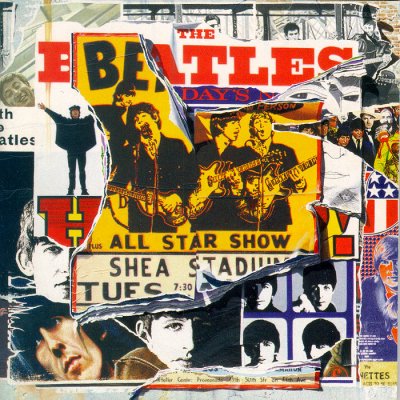 On March 18th, 1996, the highly anticipated “Anthology 2” album was released, which featured four songs The Beatles performed live on the British television show “Blackpool Night Out” on August 1st, 1965. This version of “Ticket To Ride” was also introduced by Paul as “the record before” but by this time they had already decided to omit the second bridge and last verse. On March 18th, 1996, the highly anticipated “Anthology 2” album was released, which featured four songs The Beatles performed live on the British television show “Blackpool Night Out” on August 1st, 1965. This version of “Ticket To Ride” was also introduced by Paul as “the record before” but by this time they had already decided to omit the second bridge and last verse.
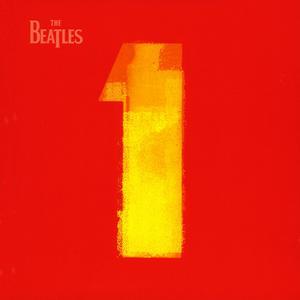 November 13th, 2000 was the date of release for the amazingly successful album “Beatles 1,” which acted as a suitable replacement for 1982’s “20 Greatest Hits” which was now out-of-print. Eleven million copies later, it helped to cement “Ticket To Ride” forever as one of the all-time classic Beatles songs in the minds of Americans, not to mention selling 31 million copies worldwide as of 2017. A remastered version of this album was released in September of 2011 and a newly mixed version was released on November 6th, 2015. November 13th, 2000 was the date of release for the amazingly successful album “Beatles 1,” which acted as a suitable replacement for 1982’s “20 Greatest Hits” which was now out-of-print. Eleven million copies later, it helped to cement “Ticket To Ride” forever as one of the all-time classic Beatles songs in the minds of Americans, not to mention selling 31 million copies worldwide as of 2017. A remastered version of this album was released in September of 2011 and a newly mixed version was released on November 6th, 2015.
The box set “The Capitol Albums, Vol. 2” was released on April 11th, 2006, and included the entire “Help!” soundtrack album as it was heard in 1965, complete with the duophonic “Ticket To Ride” and all the Ken Thorne instrumentals.
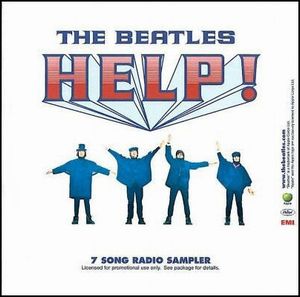 A special promo release came out around November 6th, 2007 in conjunction with the new DVD version of the movie “Help!” “7 Song Radio Sampler” was a CD that included all of The Beatles movie songs including “Ticket To Ride.” This new handsomely packaged disc is quite the rarity today. A special promo release came out around November 6th, 2007 in conjunction with the new DVD version of the movie “Help!” “7 Song Radio Sampler” was a CD that included all of The Beatles movie songs including “Ticket To Ride.” This new handsomely packaged disc is quite the rarity today.
For enthusiasts who want to own the original 1965 mono and stereo mixes of “Ticket To Ride,” they are both available on the box set “The Beatles In Mono,” which was released on CD on September 9th, 2009 and on vinyl on September 9th, 2014.
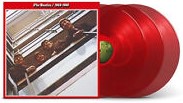 A 50th Anniversay edition of the compilation album "The Beatles / 1962 - 1966" (aka "The Red Album") was released on November 10th, 2023, the new stereo mix of "Ticket To Ride," as detailed above, being included. This expanded release included 12 additional songs for a total of 38 tracks, and was made available as a double CD and as a triple vinyl release on both black and red vinyl. A 50th Anniversay edition of the compilation album "The Beatles / 1962 - 1966" (aka "The Red Album") was released on November 10th, 2023, the new stereo mix of "Ticket To Ride," as detailed above, being included. This expanded release included 12 additional songs for a total of 38 tracks, and was made available as a double CD and as a triple vinyl release on both black and red vinyl.
Live Performances
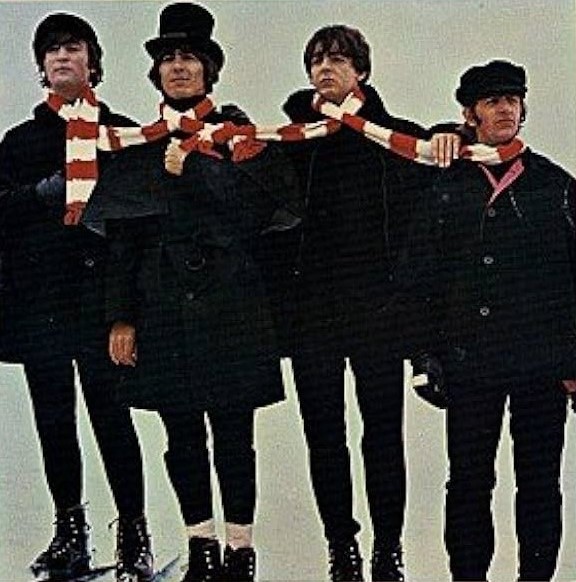 As was their usual pattern for new single releases, The Beatles focused much attention on promoting the song through concerts, radio and television shows. The performance life of this song was limited to the year 1965, but the promotion was extensive nonetheless. As was their usual pattern for new single releases, The Beatles focused much attention on promoting the song through concerts, radio and television shows. The performance life of this song was limited to the year 1965, but the promotion was extensive nonetheless.
Their first performance of "Ticket To Ride," so to speak, was the video footage shot on March 20th, 1965 for the mimed sequence in the movie “Help!” Their clowning around in the snow in Austria was the backdrop for the track, which featured them experimenting on skis and hovering around a grand piano.
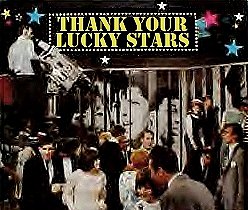 On a Sunday off during the shooting of the movie, The Beatles taped a performance for the British television show “Thank Your Lucky Stars,” which was the show that launched them onto British television for the first time back in January of 1963. This taping, which included lip-syncing “Ticket To Ride,” “Yes It Is” and “Eight Days A Week,” occurred on March 28th, 1965 and was broadcast nationally on April 3rd, nearly a week before this new single was released in their home country. On a Sunday off during the shooting of the movie, The Beatles taped a performance for the British television show “Thank Your Lucky Stars,” which was the show that launched them onto British television for the first time back in January of 1963. This taping, which included lip-syncing “Ticket To Ride,” “Yes It Is” and “Eight Days A Week,” occurred on March 28th, 1965 and was broadcast nationally on April 3rd, nearly a week before this new single was released in their home country.
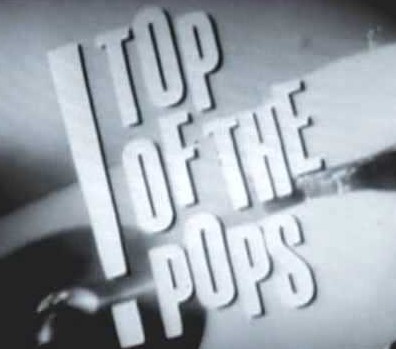 On another day off of shooting for the movie, they taped another mimed performance of “Ticket To Ride” for the British TV show “Top Of The Pops” on April 10th. This taping was first aired in Britain on April 15th and then on April 29th, 1965. Surprisingly enough, a brief 25 second portion of this taping was also included in the May 22nd, 1965 episode of the children’s sci-fi show “Dr. Who.” On another day off of shooting for the movie, they taped another mimed performance of “Ticket To Ride” for the British TV show “Top Of The Pops” on April 10th. This taping was first aired in Britain on April 15th and then on April 29th, 1965. Surprisingly enough, a brief 25 second portion of this taping was also included in the May 22nd, 1965 episode of the children’s sci-fi show “Dr. Who.”
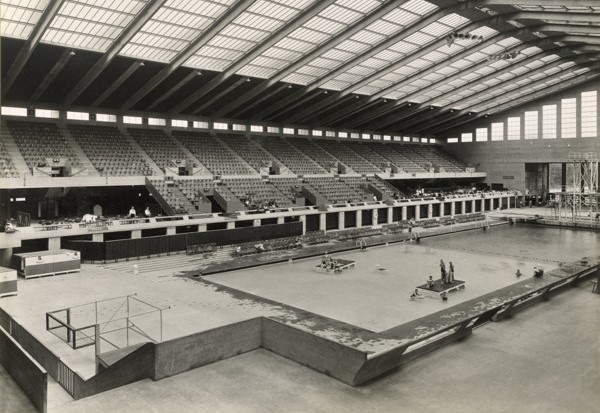 On April 11th, 1965, they performed the song at the “New Musical Express 64-65 Annual Poll-Winners’ All-Star Concert” at the Empire Pool in Wembley. This performance aired in Britain on April 18th on the show “Poll Winners Concert,” which also included the group receiving their award from Tony Bennett. Also on the same day (April 11th), they lip-synced the song live on the British TV show "The Eamonn Andrews Show" in Studio One of ABC's Teddington Studios. On April 11th, 1965, they performed the song at the “New Musical Express 64-65 Annual Poll-Winners’ All-Star Concert” at the Empire Pool in Wembley. This performance aired in Britain on April 18th on the show “Poll Winners Concert,” which also included the group receiving their award from Tony Bennett. Also on the same day (April 11th), they lip-synced the song live on the British TV show "The Eamonn Andrews Show" in Studio One of ABC's Teddington Studios.
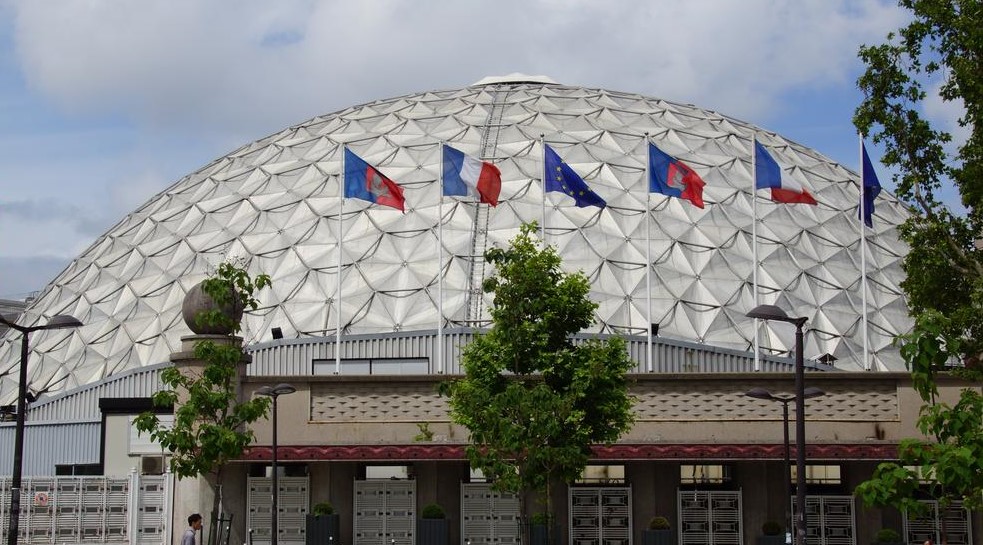 Their 14-day European tour, which ran from June 20th through July 3rd, featured “Ticket To Ride” among their twelve song set list. This tour started with two shows in Paris at the Palais des Sports, the first of which was broadcast on the French radio show “Musicorama” on June 27th and the second of which was broadcast live on a show entitled “Les Beatles.” The tour also went through Italy and France before ending in Barcelona, Spain. Their 14-day European tour, which ran from June 20th through July 3rd, featured “Ticket To Ride” among their twelve song set list. This tour started with two shows in Paris at the Palais des Sports, the first of which was broadcast on the French radio show “Musicorama” on June 27th and the second of which was broadcast live on a show entitled “Les Beatles.” The tour also went through Italy and France before ending in Barcelona, Spain.
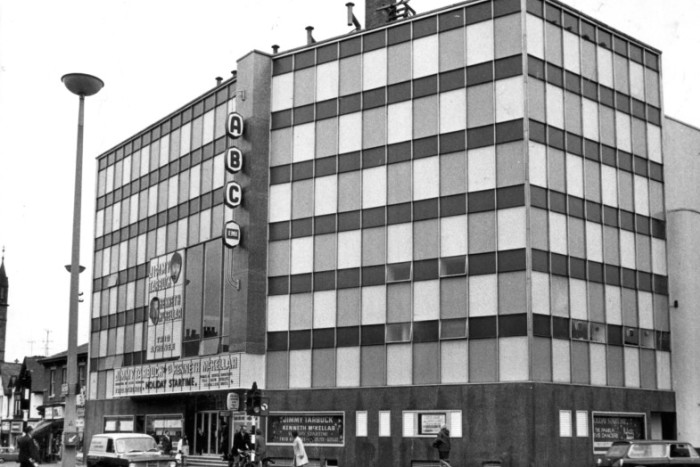 Even though their next single “Help!” had just been released, they still featured the song on television performances with Paul introducing the song as “the record before.” On August 1st, 1965, the group included the song in the six-song set list on the live British TV variety show “Blackpool Night Out” performed at the ABC Theatre in Blackpool. This footage is included in the Anthology video series and, as can be seen, they had omitted the second bridge and last verse of the song by this time. Even though their next single “Help!” had just been released, they still featured the song on television performances with Paul introducing the song as “the record before.” On August 1st, 1965, the group included the song in the six-song set list on the live British TV variety show “Blackpool Night Out” performed at the ABC Theatre in Blackpool. This footage is included in the Anthology video series and, as can be seen, they had omitted the second bridge and last verse of the song by this time.
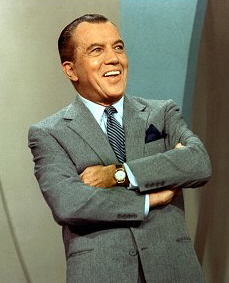 A nearly identical performance of this set list was taken to America on August 14th for a filmed segment to be included in the opening episode of the new Ed Sullivan Show season of 1965/66. The song “Ticket To Ride” was taped with a long instrumental introduction in order for profile shots of each Beatle to be shown on screen. This episode was broadcast in the US on September 12th, 1965. A nearly identical performance of this set list was taken to America on August 14th for a filmed segment to be included in the opening episode of the new Ed Sullivan Show season of 1965/66. The song “Ticket To Ride” was taped with a long instrumental introduction in order for profile shots of each Beatle to be shown on screen. This episode was broadcast in the US on September 12th, 1965.
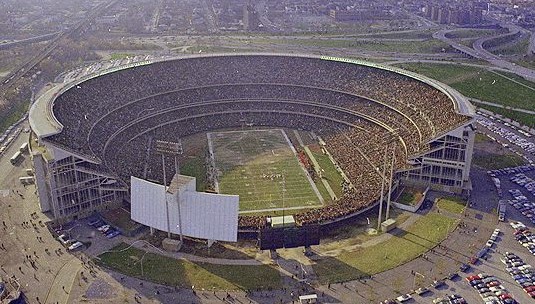 The day after this segment was taped, Ed Sullivan did the honors of introducing them at the first stop of their 1965 tour, which happened to be at their momentous Shea Stadium concert in New York City on August 15th of that year. The show was filmed and became the television special “The Beatles At Shea Stadium,” which aired first in Britain on March 1st, 1966 and eventually in the US on January 10th, 1967. “Ticket To Ride” was among the twelve songs taped for this broadcast as well as played throughout this American tour. The day after this segment was taped, Ed Sullivan did the honors of introducing them at the first stop of their 1965 tour, which happened to be at their momentous Shea Stadium concert in New York City on August 15th of that year. The show was filmed and became the television special “The Beatles At Shea Stadium,” which aired first in Britain on March 1st, 1966 and eventually in the US on January 10th, 1967. “Ticket To Ride” was among the twelve songs taped for this broadcast as well as played throughout this American tour.
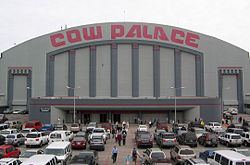 The American tour ran from August 15th through 31st, 1965 and hit hot spots like Atlanta, Houston, Chicago, San Diego and even Toronto, Canada before ending at the Cow Palace in San Francisco. Another high point of the tour was their two shows at the Hollywood Bowl in Los Angeles on August 29th and 30th, 1965, which were recorded for future release. The American tour ran from August 15th through 31st, 1965 and hit hot spots like Atlanta, Houston, Chicago, San Diego and even Toronto, Canada before ending at the Cow Palace in San Francisco. Another high point of the tour was their two shows at the Hollywood Bowl in Los Angeles on August 29th and 30th, 1965, which were recorded for future release.
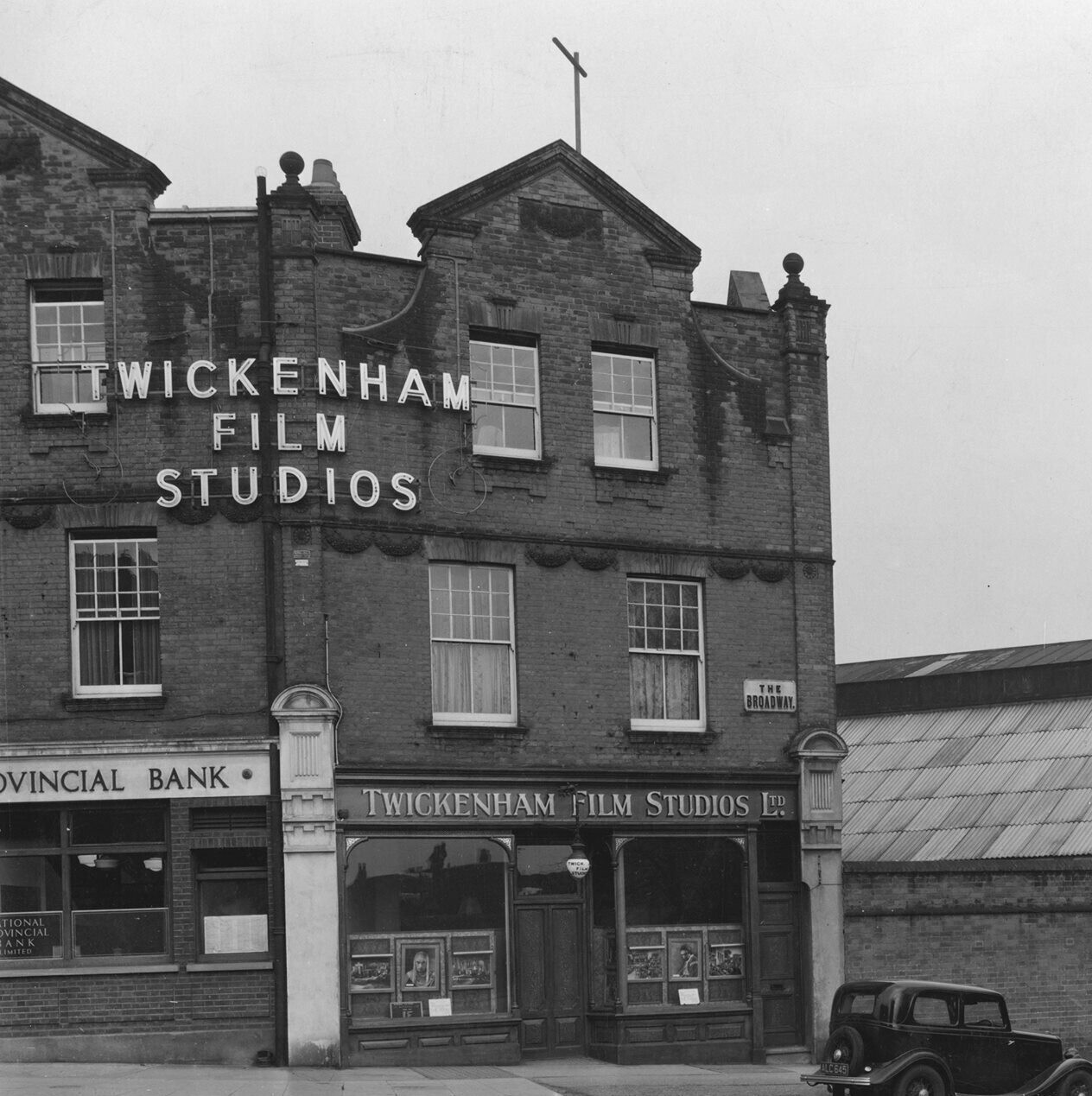 The very last time The Beatles performed the song was on November 23rd, 1965 for a lip-synced film to be given to television shows worldwide so they wouldn’t have to make personal appearances. Among the ten fil clips filmed on this day in Twickenham Film Studios in London was the nine-month-old “Ticket To Ride,” which was performed in front of a backdrop of enlarged bus and train tickets. Funnily enough, John, Paul and George are all seated during this video while Ringo is standing while pretending the play the drums. They all appear to be bored and uninterested in shooting this film, but British television viewers no doubt ate it up anyway on December 25th and 26th, 1965 when the video was shown on “Top Of The Pops ’65.” The very last time The Beatles performed the song was on November 23rd, 1965 for a lip-synced film to be given to television shows worldwide so they wouldn’t have to make personal appearances. Among the ten fil clips filmed on this day in Twickenham Film Studios in London was the nine-month-old “Ticket To Ride,” which was performed in front of a backdrop of enlarged bus and train tickets. Funnily enough, John, Paul and George are all seated during this video while Ringo is standing while pretending the play the drums. They all appear to be bored and uninterested in shooting this film, but British television viewers no doubt ate it up anyway on December 25th and 26th, 1965 when the video was shown on “Top Of The Pops ’65.”
Conclusion
“You hear it now and it doesn’t sound too bad,” John Lennon said about “Ticket To Ride” back in 1970, “but it’d make me cringe. If you give me the a-track and I remix it, I’ll show you what it is really.”
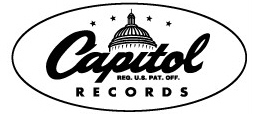 Sadly, John didn’t survive to hear what modern technology has done to The Beatles catalog. His open disgust for the quality of “The Beatles/1962-1966” (aka "The Red Album") released in 1973 is noteworthy, since the American copies of the albums contained many of the old “duophonic” stereo versions Capitol Records prepared in the sixties, including “Ticket To Ride.” Sadly, John didn’t survive to hear what modern technology has done to The Beatles catalog. His open disgust for the quality of “The Beatles/1962-1966” (aka "The Red Album") released in 1973 is noteworthy, since the American copies of the albums contained many of the old “duophonic” stereo versions Capitol Records prepared in the sixties, including “Ticket To Ride.”
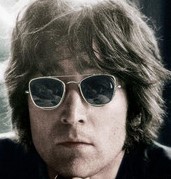 One can only wonder whether, in the age of compact discs, remixing, re-mastering and 5.1 Surround Sound, if John Lennon would feel that the true essence of the song is finally shining through. Beatles enthusiasts and audiophiles around the world are happy for the most part. All we know is that, as far as we can tell, the intended sonic brilliance that makes up the February 15th, 1965 recording of “Ticket To Ride” can finally be appreciated for what it was meant to be. One can only wonder whether, in the age of compact discs, remixing, re-mastering and 5.1 Surround Sound, if John Lennon would feel that the true essence of the song is finally shining through. Beatles enthusiasts and audiophiles around the world are happy for the most part. All we know is that, as far as we can tell, the intended sonic brilliance that makes up the February 15th, 1965 recording of “Ticket To Ride” can finally be appreciated for what it was meant to be.
Song Summary
“Ticket To Ride”
Written by: John Lennon / Paul McCartney
-
Song Written: December, 1964 to February 14, 1965
-
Song Recorded: February 15, 1965
-
First US Release Date: April 19, 1965
-
US Single Release: Capitol #5407
-
Highest Chart Position: #1 (1 week)
-
-
British Album Release: Parlophone #PCS 3071 “Help!”
-
Length: 3:03 (mono), 3:10 (stereo)
-
Key: A major
-
Producer: George Martin
-
Engineers: Norman Smith, Ken Scott, Jerry Boys
Instrumentation (most likely):
-
John Lennon - Lead Vocals, Rhythm Guitar (1961 Sonic Blue Fender Stratocaster)
-
Paul McCartney - Bass Guitar (1963 Hofner 500/1), Lead Guitar (1962 Epiphone Casino ES-230TD), Harmony Vocals
-
George Harrison – Lead and Rhythm Guitar (1963 Rickenbacker 360-12 Fire-Glo and 1961 Sonic Blue Fender Stratocaster)
-
Ringo Starr – Drums (1964 Ludwig Super Classic Black Oyster Pearl), tambourine, handclaps
Written and compiled by Dave Rybaczewski
|
IF YOU WOULD LIKE TO MAKE A DONATION TO KEEP THIS WEBSITE UP AND RUNNING, PLEASE CLICK BELOW!
|